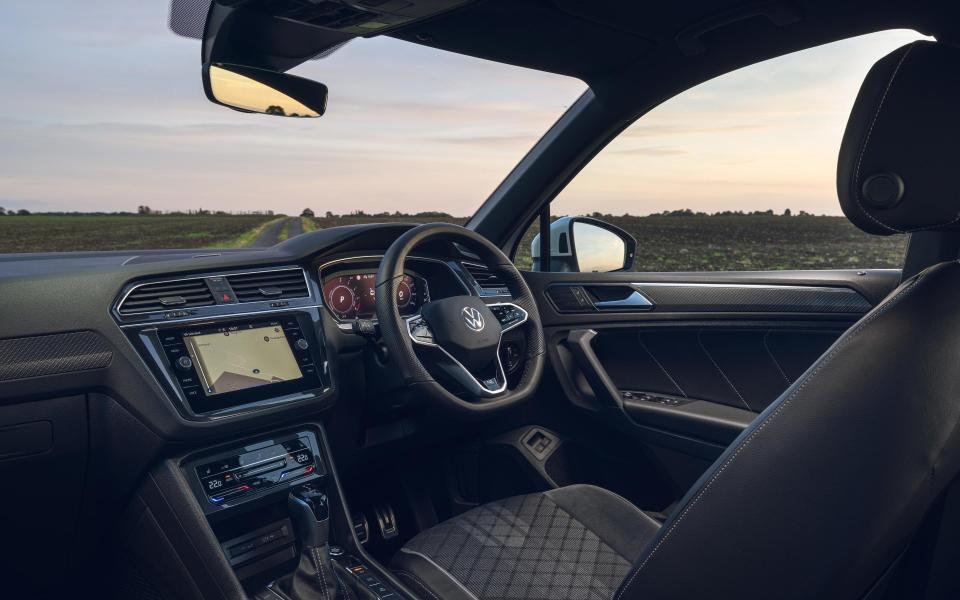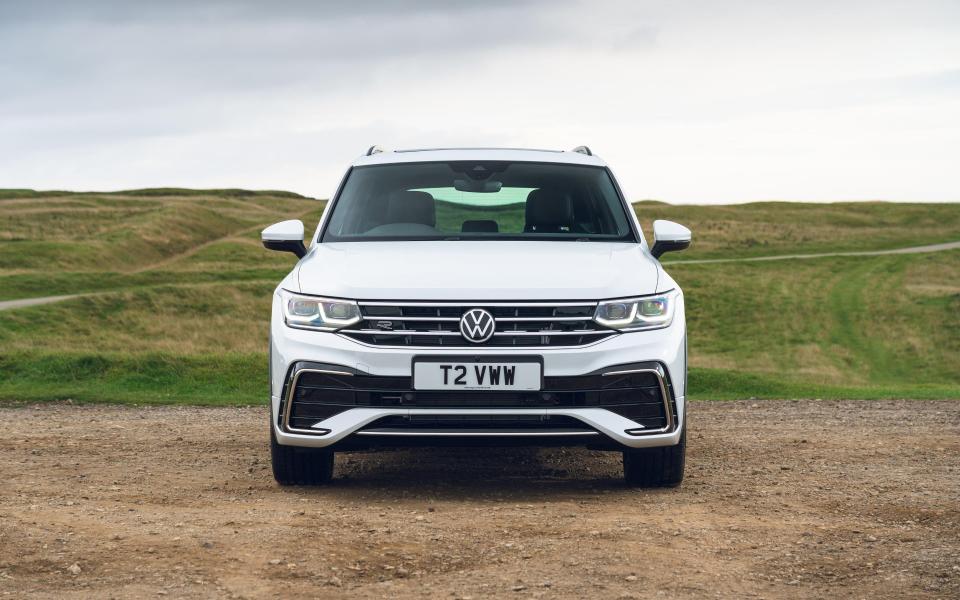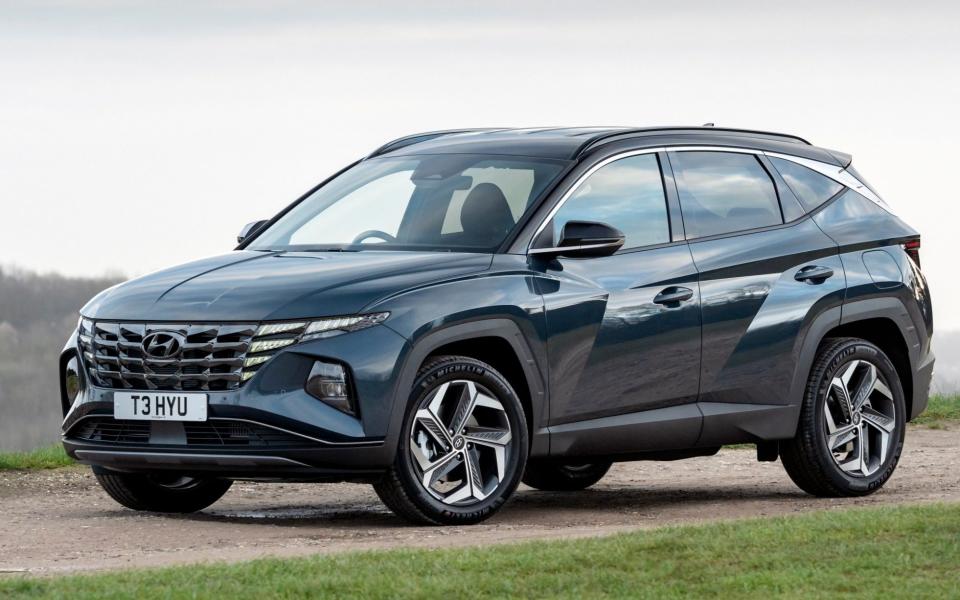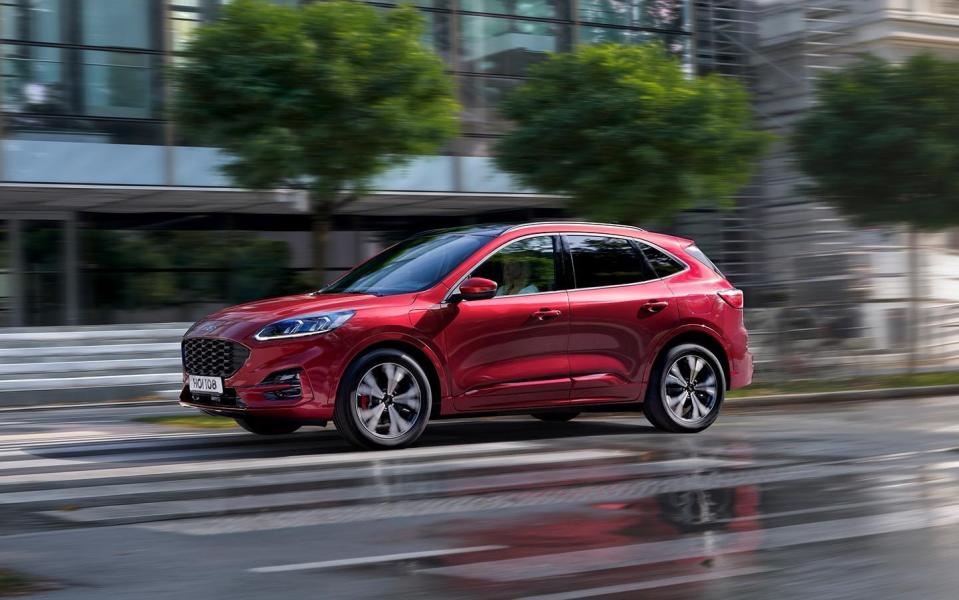Volkswagen Tiguan eHybrid review: the plug-in hybrid that’s the very definition of average

There’s a lot to be said about a plain, A4 sheet of paper. It has many uses. You can write a letter on it, draw a picture, perhaps even – if you’re feeling daring – fold it up into a paper aeroplane and throw it at the boss in a company meeting.
Despite this, people rarely get excited about A4 paper. And the same can be said of the Volkswagen Tiguan. It is the A4 paper of SUVs; solid, sensible and useful, but somewhat lacking in excitement.
Of course, not even automotive stationery can remain stationary, which is why the Tiguan has just had a mid-life primp. There’s a new plug-in hybrid version, too; badged eHybrid, it features Volkswagen’s now-ubiquitous plug-in hybrid powertrain, which we’ve already seen in the Golf and Passat GTEs, as well as a smattering of Skoda, Seat and Audi models. So has either of these revisions brought a bit of colour to the Tiguan’s blank sheet?
Pros and cons
Pros
Spacious
Versatile seating
Low finance rates
Cons
Lumpen ride quality
High company car tax rates (for a PHEV)
It’s a bit dull
Paper view
Volkswagen’s venerable 1.4-litre petrol engine sits at the heart of the Tiguan’s plug-in hybrid (PHEV) system, boosted by an electric motor to 242bhp. This is now quite an old plug-in system – it’s been around in one form or another since the Golf GTE was introduced in 2014, and it shows. The Tiguan will do a mediocre 29 miles on a single charge, according to the standard Government tests, and all of its main rivals can manage more than that – the Citroen C5 Aircross, for example, can go 40 miles on electric power (with the same sized battery to boot).
What’s more, the Tiguan’s on-board charger will only allow for charging at up to 3.6kW, far less than most home wallboxes can pump out, and as a result it’ll take three hours and 40 minutes to fully charge your Tiguan. By contrast, some of its competitors will charge at a wallbox’s maximum rate of 7kW, which will roughly halve their charging times.

Then there are the CO2 emissions, which are higher than most of its rivals’; that’s important, because it means the Tiguan will cost you more tax if you’re choosing one as a company car – which, given the current tax incentives, is one of the big reasons for choosing a plug-in hybrid in the first place.
If you’re buying privately, however, the eHybrid’s list price sits roughly in the midst of its rivals; if you’re financing it, meanwhile, you’ll find its monthly repayments are actually surprisingly affordable, sitting toward the cheaper end of the spectrum.
Trims and equipment
Unlike Volkswagen’s GTE models, the Tiguan eHybrid is positioned not as a distinct model in its own right, but as an engine option available on three versions of the Tiguan: Life, Elegance and R-Line.
Go for the Life, and you get front & rear parking sensors, LED headlights, three-zone climate control, adaptive cruise control and 18-inch alloy wheels, which seems like plenty for an entry-level model.
Upgrade to the Elegance version we’re testing here, and you get a welter of luxury touches; heated front seats, a heated steering wheel, a panoramic roof, a reversing camera, 19-inch wheels, and some rather tactile velour upholstery all come as standard.
R-Line, meanwhile, adds 20-inch wheels, a sportier bodykit, variable-ratio power steering, and stiffer suspension, all in the aid of making it look and feel a little more athletic, though in exchange, it loses some of the Elegance’s extra kit – for example, the panoramic roof.
Inside job
So what’s changed with the facelift? Well, very little, actually; as well as some new engines and gearboxes, there are some new lights and a refreshed nose. Inside, the Tiguan gets a new entertainment system, and… that’s about it, really.

Not that much really needed changing inside. The Tiguan has always been one of the classier of the current SUV cohort, with high-quality materials throughout. Its interior is a little dull to look at, mind you; the Hyundai Tucson Hybrid’s interior is more interesting, as is that of the Peugeot 3008 Hybrid.
There’s plenty of space, though, and the rear seats slide backward and forward in a 60/40 format, and fold individually, which ensures a decent amount of flexibility. The boot, meanwhile, comes in at 476 litres; as is to be expected, that’s less than the standard car’s 615, to make space for the extra hybrid gubbins. But it’s not too bad by the standards of its rivals – it’s smaller than the Tucson PHEV’s 558-litre luggage compartment, but a touch larger than that of the C5 Aircross Hybrid (460 litres).
A touch of genius?
Volkswagen has brought its touch-sensitive climate control panel, seen hitherto in the facelifted Arteon, to the Tiguan. As with all of these things it makes life harder, rather than easier. On the plus side, and in contrast to the Arteon, the steering wheel has at least escaped unscathed, and retains physical buttons.
You get an all-digital “virtual cockpit” ahead of the driver, which isn’t bad, but the standard view with its faux dials is rather cluttered, which makes it tricky to read in a rush. Switching to an alternate view makes life easier, but as these scatter digital readouts around the screen seemingly at random, they also look a touch unfinished.
The infotainment system, meanwhile, is Volkswagen’s latest, which is renowned for its glitchiness, although the system in our test car didn’t give us any issues and felt relatively intuitive.
Starting off
Like the vast majority of PHEVs, the Tiguan starts up on electric power, and from then on will only bring in the petrol engine if you tweak the settings to do so, if you demand more power than the motor alone can muster or if you run down the battery.

On the first time of asking, when it was cold, our test car paused dramatically for a second when asked to bring in the petrol engine, as though someone had cut the throttle to 20 per cent, but the rest of the time the switch between petrol and electric modes was seamless.
Not silent, however; as we found in a long-term test Passat GTE, the 1.4-litre four-cylinder isn’t the smoothest engine around. In fact, it can get quite vocal when you push it hard and even when you don’t it generates a bit of vibration through the steering column and pedals. Most of the time, though, it’s innocuous enough.
As is the Tiguan’s performance. With this sort of power on tap you’d expect to feel truly quick, but its outright grunt is blunted somewhat by its weight which, at 1.8 tonnes, is not inconsiderable. With the petrol engine screaming away, full-throttle acceleration is something you end up tending to avoid, rather than something to be enjoyed.
Papering over the cracks
The ride is a bit hit-and-miss, too. Volkswagen has clearly firmed it up to make sure that, with all that weight up top, the Tiguan doesn’t fall over at the first sign of a bend, and as a result it feels fairly stiffly sprung. Granted, it rounds off the edges of the worst bumps pretty well, so the wheels don’t crash and thump too much. But there’s a restless quality even on smoother roads, and it feels a little wooden over larger lumps; it can even get a little fidgety on poorly-surfaced motorway stretches, too.
The benefit of this is that the Tiguan doesn’t feel all at sea when you leave the motorway; in fact, on fast, sweeping A-roads it’s actually rather satisfying to drive, that taut suspension keeping body lean in check, which results in plenty of lateral grip you can lean on and a reassuringly predictable chassis balance.
More winding roads aren’t quite so much fun, because all that weight means the Tiguan doesn’t feel very keen to turn in; what’s more, its over-assisted steering feels leaden and numb, even when you switch it into GTE mode (somewhat oddly, given it isn’t one), which only really increases the weighting slightly.
Fortunately, the chassis telegraphs its intentions pretty well and if the nose does lose grip it does so very progressively, which means that while this isn’t exactly a fun car to drive, it is at least safe and predictable.
The Telegraph verdict
Sometimes, a car earns a three-star rating because some parts of it are so brilliant they deserve five stars, yet others are so poor they warrant only one. This is not one of those cars. The Tiguan eHybrid is thoroughly average through and through; as anodyne as a dinner of cabbage soup followed by vanilla ice cream in a room painted magnolia with lounge jazz playing in the background.
It is neither smooth nor scintillating to drive; it is spacious and versatile, but not exceptionally so and while it will save you some company car tax, it won’t save you as much as its rivals can. For its existence, we feel neither remorse nor joy. It just is.
And that’s fine, if you like that sort of thing. But in the presence of a glut of talented rivals, the Tiguan’s anonymity stands out. Or, rather, it doesn’t. And frankly, life’s too short to eat cabbage soup all the time.
Telegraph rating: Three stars out of five
The facts
On test: Volkswagen Tiguan 1.4 eHybrid 245 Elegance
Body style: Five-door SUV
On sale: now
How much? £38,585 on the road (PHEV range from £36,185)
How fast? 127mph, 0-62mph in 7.5sec
How economical? 153.2mpg (WLTP Combined)
Engine & gearbox: 1,395cc four-cylinder petrol engine, six-speed dual-clutch automatic gearbox, front-wheel drive
Electric powertrain: AC electric motor with 13kWh battery, 3.6kW on-board charger, Type 2 charging socket
Electric range: 29 miles
Maximum power/torque: 242bhp/184lb ft
CO2 emissions: 43g/km
VED: £0 first year, then £145
Warranty: 3 years / 60,000 miles (mileage unlimited in first two years)
Spare wheel as standard: No (not available)
The rivals
Citroen C5 Aircross Hybrid 225 Shine Plus
222bhp, 201.7mpg, £35,700 on the road

With comfortable seats, comfortable suspension and a comfortable interior, there are no prizes for guessing where the C5 Aircross’s priorities lie. It’s smoother and quieter than the Tiguan, and its funky dashboard is far more interesting to look at – albeit nowhere near as high-quality. With eye-catching looks on the outside, too, this is the perfect antidote to the Tiguan’s insipidity.
Hyundai Tucson 1.6 T-GDI 265 Plug-in Hybrid Premium
261bhp, 201.8mpg, £39,275 on the road

Given it’s the most powerful car here, not to mention the only one with four-wheel drive as standard, it’s no wonder the plug-in Tucson costs more to buy than its rivals. That it manages almost as many miles on electric power as the Citroen is to its credit; you won’t miss that front end, either. Inside, the Tucson is classy rather than crazy, but it’s its long warranty that really makes it a smarter way to spend your cash than the Tiguan.
Ford Kuga 2.5 PHEV 225 ST Line X Edition
222bhp, 256.8mpg, £38,005 on the road

Clever use of its hybrid system means the Kuga positively sips fuel, and in our experience, it’ll go a long way on a charge – longer even than its figures suggest. And Ford has come the closest to cracking the ‘fun PHEV SUV’ conundrum; the Kuga is involving and fluid to drive, with lots of feedback and plenty of grip despite its weight. The downsides are a tinny interior and a tiny boot.
For new and used buying guides, tips and expert advice, visit our Advice section, or sign up to our newsletter here
To talk all things motoring with the Telegraph Cars team join the Telegraph Motoring Club Facebook group here

